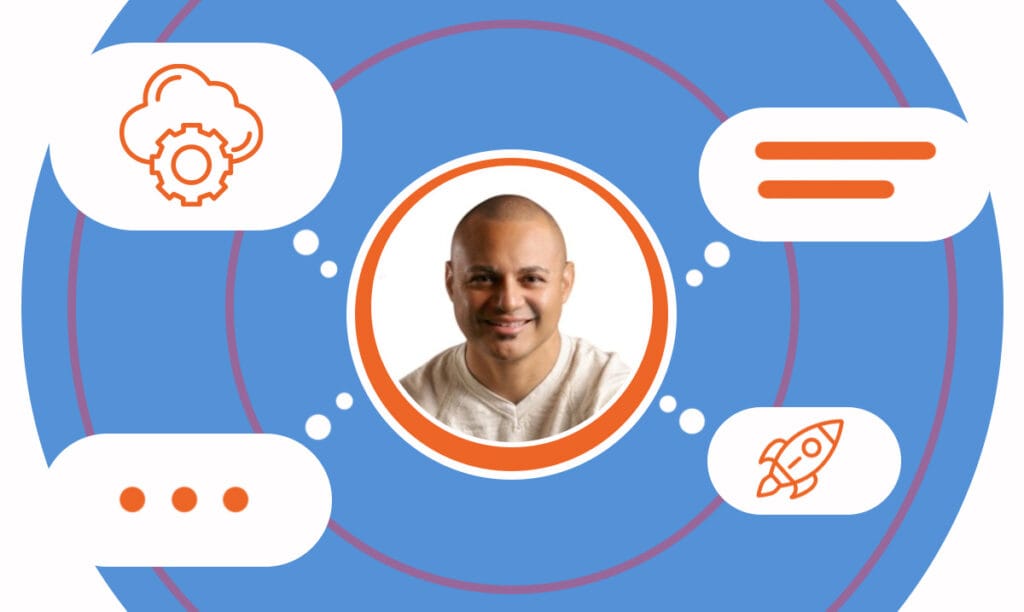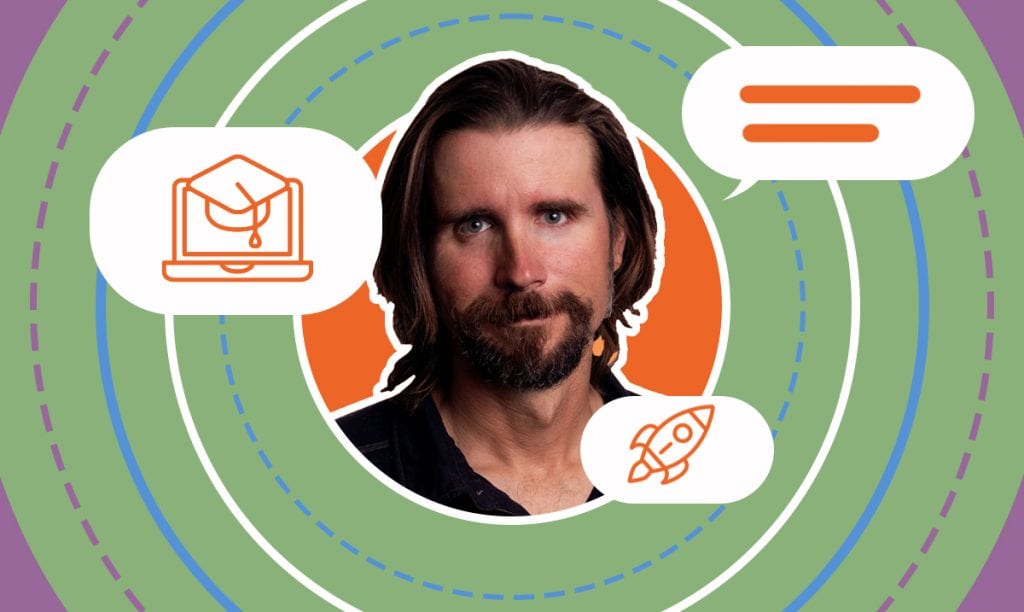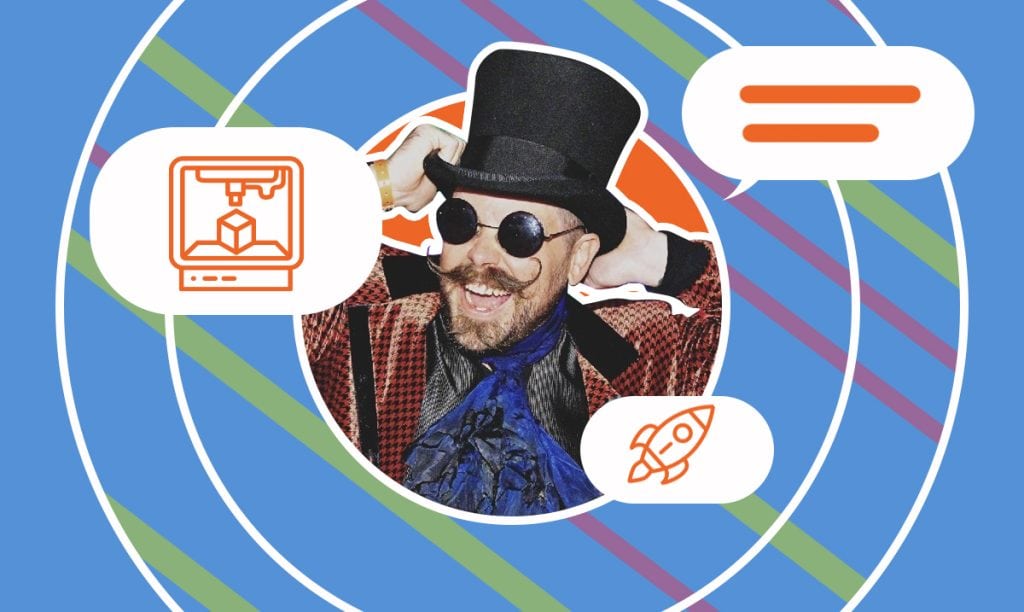In this interview, we sit down with Nan Zhou, co-founder of No Code Map App, to discuss how she and her team transformed a trip-planning mapinterfac ...
SaaS Pricing Strategies with Pricing I/O Founder
Written by: Esther Strauss
Esther is a business strategist with over 20 years of experience as an entrepreneur, executive, educator, and management advisor.
Published on March 18, 2024

In B2B SaaS, pricing strategy can be the linchpin of success. Enter Marcos Rivera, the founder and CEO of Pricing I/O, who has carved a niche in this dynamic landscape. With a unique blend of insight and innovation, Marcos has led his team to redefine the way high-growth companies approach pricing.
In this interview, we delve deep into his 5Q Pricing Framework™, uncover the strategies that have revolutionized SaaS pricing, and explore the wisdom behind the success of Pricing I/O. Join us as Marcos Rivera shares his journey, challenges, and secrets to mastering the art of pricing in the digital age.
Discovering SaaS Pricing Needs
SBS – How did you identify the specific need for pricing strategy consulting in the B2B SaaS market?
Marcos – I have been growing software companies for 25 years, and in that experience, I noticed that the value of technology is rapidly evolving and changing. This makes it difficult to understand and measure the value that technology provides. During my years at a private equity firm, I also recognized that most software operators guessed on their pricing and packaging, and it was like a black box to them even though pricing was the most powerful lever in capturing the value their software produced. This gap didn’t matter if they were a small startup or an established unicorn; it was universal.
So, in noticing the rapidly changing value of software and the pervasive guesswork in trying to price that value, the final dot I connected was that most companies couldn’t afford to spend a million dollars with a large consulting firm and six months in time figuring out what the right pricing model should be. That is the gap I wanted or needed to fill.
Exploring the 5Q Pricing Framework in SaaS
SBS – Can you describe the 5Q Pricing Framework™ and how it differs from traditional pricing models?
Marcos – The 5Q Pricing Framework came from my experience solving the pricing problem for hundreds of software companies. The concept is simple: if you attack pricing in a certain sequence, it actually becomes easier. I think most companies are asking the wrong questions when trying to solve for the right pricing model. The first question they ask is typically, “How much should I charge for something?” But that question is exceedingly difficult if you don’t understand what you’re charging for. The “who” behind who’s buying the product, what pain they want to solve, and the “why” behind it all — what’s your growth strategy? Where are you trying to position yourself in the market?
So, the 5Q Framework stands for five questions. If you answer these five questions in this sequence, the pricing problem becomes much easier. It starts with the first question, which is “why.” Why should I grow? Where’s the growth coming from? The “why” is essentially trying to understand strategically where your firm, product, and value are today and where you plan to grow it. That can mean moving up the market, moving down the market, serving different verticals, moving into different geographies, and solving different use cases.
The next question is “who.” Now that we’re very clear on where we want to go strategically, which customers are actually more important than others? The “who” behind it all is really this customer journey and the segmentation behind that to understand the different groups of customers you want to serve, as well as the customers you don’t want to serve, and get clarity on that.
The next question in 5Q is “what.” What do we sell to these different groups? And that “what” should be the experience you’re trying to craft for each group. It’s not a checklist of features or anything like that. It’s more holistic. What experience do we want this audience to get when discovering, gaining some traction in the product, activating, using, and getting support around it? What does that experience look like? That is the “what.”
Then we have the “how.” So, here’s the fun part. Now that we understand the why behind our strategy, the who in terms of who we’re going after and what we want to sell them, the how much and how to charge for something becomes so much easier. This is now the mechanics — how much do we charge? Do we charge for this or that?
The final one is “which.” Which part of my pricing is working, and which part of the model is not? This is the constant iteration and improvement to the model because your customers will not stand still, your product is not going to stand still, the market will not stand still, and so neither should your pricing.
Challenges in SaaS Pricing Strategies
SBS – What are the common pricing challenges you see in high-growth B2B SaaS companies?
Marcos – The most common challenges I see in high-growth B2B SaaS companies are one-dimensional pricing models that are not reflective of value and mechanics, which adds friction to sales. Let me unpack each one:
The first challenge is the one-dimensional model. This means they typically only sell one package, a “one size fits all” approach. However, this can introduce misalignment with sales, either too heavy for certain purchases or too light for others. While the perception may be that they are keeping it simple by selling one thing, in actuality, customers are not one type of customer and are not one thing. The solution to this problem is to create a pricing structure and architecture that allows different parts of the total addressable market to be served differently.
The second challenge is that most price points in the marketplace reflect old values or are stale. This means that most companies are underpriced. If you set prices four or five years ago and have since added advancements to your solution, you are likely underpriced. You must also consider your positioning in the marketplace and how much value you have provided to customers over time. If no one is pushing back on your price, if customers are saying what a bargain you are, or if you have released a lot of new value without capturing it, chances are you are underpriced by anywhere from 10% to 60% or even more.
The third challenge is unnecessary friction in the sales process. This occurs when the pricing model is overly complex, with tables, rules, and many dimensions. This complexity often comes from trying to charge for too many innovations without aligning them to the proper use case and understanding how much the new capability adds to the value. The solution is to distill the model down to the key value drivers that matter most to the customer, even if it means not charging for certain things to induce adoption or the initial purchase.
Tailoring Pricing for Every SaaS Client
SBS – How do you tailor your pricing strategies to fit the unique needs of each client?
Marcos – Pricing to value really requires two things. First, you need good data to inform your hypotheses, and second, you need a good framework to structure decision-making so you don’t go down a rabbit hole. At Pricing I/O, we help clients with both.
Our process is rigorous yet flexible enough to adjust to the context of our clients’ specific challenges. This means that while everyone has the same goal of optimizing how they monetize their value, the specific product capabilities, the stage of the life cycle of the product, the stage of the company, the market dynamics, the competitive dynamics — all those things we factor in as we shape the engagement to see where we want to place our emphasis throughout the pricing design journey.
We also collaborate closely with our clients to ensure that we’re infusing the right context along the way. So, at Pricing I/O, we assume that we will never understand their products deeper than the client or the customer better than the client, but we bring years of pricing expertise and experience in software to the table. Infusing that with the right context typically leads to the best outcome, as opposed to solving the pricing challenge in a vacuum.
Real-World Success in SaaS Pricing
SBS – Can you share a success story where your pricing strategy significantly impacted a client’s growth?
Marcos – Absolutely. One notable success story is Xactly, which saw a remarkable increase in unit pricing by 85% and win rates by 13% after engaging with Pricing I/O. On top of that, their discounting dropped by 24%. They achieved this by taking a very methodical approach to pricing using our 5Q Framework. They redefined their tiers to align value better with the different parts of the market they wanted to win, removed friction from the model by including certain things that used to be additional, and allowed clients to start at a more affordable level and grow their way into the product over time. They also elevated their pricing discipline by designating a pricing leader within the company to improve their model over time. They have achieved even more success than the remarkable increases I just noted.
Evaluating SaaS Pricing Effectiveness
SBS – What metrics do you focus on when measuring the effectiveness of your pricing strategies?
Marcos – I always say that the measures you use to determine if your pricing is working really depend on your goals. Most companies are looking to increase their market share or increase their margin, so naturally, that leads to a few very common ways to measure the effectiveness of a pricing strategy. For example, when winning new business, you want to measure your cycle time and your average selling price. Most commonly, for your customer base, you want to measure net expansion, such as net dollar retention and attach rates, as well as customer lifetime value. Believe it or not, a very commonly overlooked metric is your gross dollar churn, which should indicate how your customers perceive value over time.
SaaS Pricing and Market Trends Integration
SBS – How do you integrate market trends and competitive analysis into your pricing models?
Marcos – While revisiting your pricing model, it is important that you incorporate both internal and external data points. At Pricing I/O, we integrate market trends and competitive analysis to get a better understanding of how the value we’re trying to capture is referenced or anchored by customers and market experts. We take a deeper look at the competitive landscape by researching top competitors in the same market position as our client and sometimes even those above or below the market. The idea is to understand not just what they’re charging but also their pricing model, discounting strategies, positioning, bundling, and how they implement their solutions compared to our clients. This helps us identify opportunities for our clients to gain an advantage.
We also interview industry experts and gather relevant market benchmarks to introduce a broader perspective on market trends. This helps us understand areas of the market that are either over-served or under-served and where the market trends are moving. Are we seeing more consolidation, fragmentation, or a rising tide of growth? We factor these insights into the model to ensure that we’re not just pricing for today but also for tomorrow.
Balancing SaaS Pricing and Competition
SBS – How do you balance between value-based pricing and competitive pricing in the tech sector?
Marcos – It is common for startups or companies introducing new products to look at a competitor’s pricing model and copy it, maybe with a 10% or 20% variation. The idea behind this is that people always need a frame of reference when thinking about a price. I think the good part about that is just understanding what others are charging for their value, which can give you a sense of what the market views as a generally fair and acceptable price for that type of value. However, the downside is that you’re allowing your competitor to decide your price and value, and who’s to say that they have it right? So, I always take competitive prices as an input rather than a determining factor of the price points for our clients.
Customer Feedback in SaaS Pricing
SBS – What role does customer feedback play in your pricing strategy development?
Customer feedback is critical in developing a pricing strategy because the customers experience and pay for the value. At Pricing I/O, we dive deep into the customer base to understand what value matters most to them and what value does not matter. This approach helps a lot in coming up with the best structure for your pricing and ensuring alignment between what they’re buying and what you’re selling.
We take the time to interview specific customers to get a deeper understanding of why they value what they value or why not and to uncover any potential friction points in the model (for instance, if a customer feels they are being charged for add-ons that they view should be part of the core product).
We also ask questions about triggers for purchasing, adopting, and expanding their product usage. Lastly, we aim to clearly understand their perception of the product’s impact on their business.
The Future of SaaS Pricing
SBS – How do you see the future of pricing strategies evolving in the SaaS industry?
Marcos – Interestingly, trends in pricing strategy tend to follow trends in technology investment. As technology evolves and allows us to see value differently, such as the cloud enabling software-as-a-service and the ability to monitor usage more closely, leading to usage-based pricing, I think the next wave of pricing strategies is going to start to reflect the wave we’re seeing in AI innovation and adoption. AI is allowing us to derive value from outcomes almost instantly. Therefore, I see pricing strategies becoming more outcome-based in the future, as opposed to input-based strategies in the past, such as the number of users or API calls.
SaaS Startup Pricing Tips
SBS – What advice would you give to a new SaaS startup regarding their pricing strategy?
I advise a new startup developing its pricing strategy to avoid underthinking and overthinking it at this early stage. I suggest focusing on clarity and representing the value you are providing at this stage of your software. Your price points should reflect a fair and attractive return on investment, which means you need to do the homework to calculate the benefit of the benefit and then talk to 5–10 prospects or customers to validate that claim.
Lastly, you want to go to market with two options: one that is affordable and one that is more premium. In the early days, you wanted to offer the premium package at an affordable price to induce trial, but now you’ve set the stage for increasing the price later once you’ve established product-market fit. After you have established product-market fit, you can go back to your customer base and refine your segmentation, update your packaging, and increase your prices.
Scalability in SaaS Pricing Models
SBS – How do you ensure that a pricing strategy is scalable as a company grows?
A key way to ensure that your pricing strategy is scalable as your company continues to grow is to avoid the two biggest blockers of scale when it comes to pricing. The first blocker is a packaging structure that leads to skew proliferation and custom offers. This could really slow down your sales process and blur the true value of your products and services. So, you have to make sure that your packages are right-sized for the target audience. They should not include too much or too little value.
Second, you want to make sure that you’re charging for the right things and that you are not billing for anti-value. These are things that customers try to avoid in order to keep costs down. For example, if you charge by the user but users don’t correlate with value, then your customers will try to purchase as few licenses as possible and artificially inhibit their own experience. The best path is to charge the client for things they view as fair and additive to their business, such as the number of invoices sent or the number of gigabytes processed.
Common SaaS Pricing Pitfalls to Avoid
SBS – What’s the most common mistake you see companies make in their pricing strategies, and how can it be avoided?
Marcos – I think the most common mistake I see companies make with pricing strategies is that they treat it as a one-time event instead of an evolving and inseparable part of their growth strategy. It’s a discipline, and just like any discipline, it takes practice, data feedback, and good old-fashioned rinse and repeat to get good at it. My advice is to start small and work your way up. You can look at your data for the last quarter, talk to five customers and a few sales reps, and start there to inform your next version of your pricing strategy. But don’t do it alone; pricing is a team sport, and while it requires a strong captain, it should be as cross-functional as possible. So, get others involved early and often.
Subscribe to Our Newsletter
and gain insider access to cutting-edge business insights and trends.
Featured Resources

How No Code Map App Delivers Custom Maps Without Coding
Published on April 3, 2025
Read Now

How LifterLMS Simplifies Online Course Creation for Educators
Published on February 27, 2025
Online education is booming, but creating and scaling a successful course can be challenging without the right tools. That’s where LifterLMS comes ...
Read Now

How Jinxbot Leads Zero-Waste 3D Printing
Published on January 14, 2025
Jason Reynolds, founder of Jinxbot and co-founder of the zero-waste nonprofit PrintCycle, is leading the charge. With a passion for innovation anden ...
Read Now
Comments